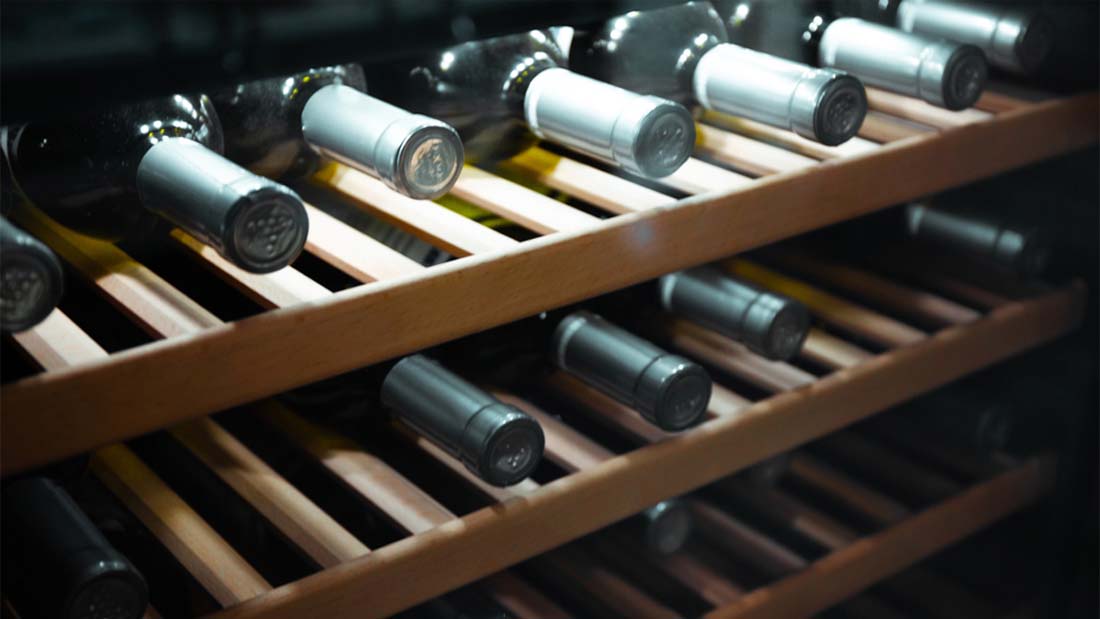
22 Oct The Effects Of Light On Wine
There is a variety of chemical compounds found in wine, with wine tannins being the most well-known. Those compounds are in precisely the right proportion when wine production and wine storage are carried out correctly, and its chemical structure can be upset by any one component.
A wine’s taste and smell can tell us if its composition of one or more of these compounds is off and if it’s gone beyond the point of no return. In other words, the overwhelming intensity of the out-of-control ingredient hides the wine’s desired aromas and flavours. A wine failure happens when this occurs. In addition to various factors that affect wine quality, texture and flavour are wine cellar lighting.
Improper lighting can affect your wine’s structure. Find out how lighting affects wine and what you can do to protect your collection by setting up your wine cellar properly.
Does Light Really Affect Wine?
The answer is yes; light has an impact on wine. You need to consider several variables, including the light source, intensity, duration, and wine type/bottle type used to store the liquid.
Effects of Light on Wine
Light, like oxygen and temperature, can reconfigure the chemical compounds in wine, resulting in wine defects. Light-struck is the term given to the wine as a result of the process. Premature ageing means the wine has lost all of its flavour and aromatic elements, as well as its original colour, clarity, and mouthfeel.
This occurs because exposure to light accelerates the formation of sulphurous compounds in wine. On the other hand, light-struck wines have off-putting aromas and flavours such as cooked cabbage, lit match, rotten egg, or wet dog. Direct sunlight, UV lights and fluorescent lights can all wreak havoc on bottles of wine.
Which Types of Wines Does Light Affect?
The lighter the wines, the more vulnerable they are to light exposure, even though this is true for all types of wine. Reds absorb more UV rays than white wines. In addition to the higher tannin content, however, aged red wine has a lower concentration of tannins, minimizing the impact of this exposure.
The Wine Bottle Colour Aspect
Any bottle will provide some level of light protection, but the darker the bottle, the better it is. Light-struck aromas increase noticeably after about 3.5 hours in clear glass bottles of still and sparkling wines when kept 35 centimetres away from 40-watt fluorescent lights. With green bottles, the results were similar after 20–30 hours.
However, it has been discovered that amber bottles provide superior protection compared to green and clear bottles. It’s better to have amber glass instead of clear because it’s more aesthetically pleasing as well.
There is also a correlation between the bottle’s shape and the path of light. Long-necked bottles with shallow angles on the bottles’ shoulders protect alcoholic beverages from various light-struck faults significantly better when lit from above.
What Kind Of Lighting Is Ideal For A Wine Cellar?
A wine cellar’s best lighting is dimmable LED lighting. No amount of illumination will be able to eliminate the issue of wine faults caused by light entirely. Among the considerations to make when deciding on wine cellar lighting are the following:
- Utilize low-wattage dimmable LED lights, which produce little heat and whose brightness can be adjusted as needed. The heat produced by non-LED lights, even if they are not in direct contact with the wines, can change your cellar’s temperature and “cook” your wine, which is the term used to describe wine faults caused by excessive heat.
- At the very least, you have the option of selecting lights that aren’t a factor in determining and maintaining an ideal wine cellar temperature.
- Use high-lumen narrow spotlights or LEDs with small apertures that are no warmer than 2700K. It’s critical where you put something. Wine bottle labels should be lit from top to bottom by a light fixture above each row of bottles.
- Avoid taking chances with your collection, even if the colour and style of your wine bottle offer some protection against light.
For more information about the perfect wine racks for compact cellars and our custom wine cellar solutions, call Signature Cellars on 1300 570 636. Our team is here to help you design the ideal custom wine cellar for your needs.
Thanks for reading,
Neil Smallman
Signature Cellars
1300 570 636




No Comments